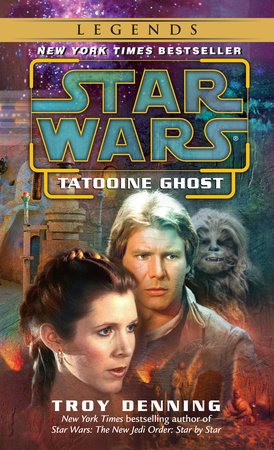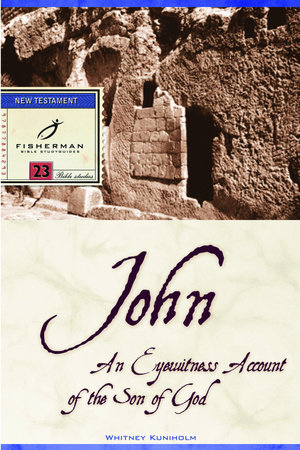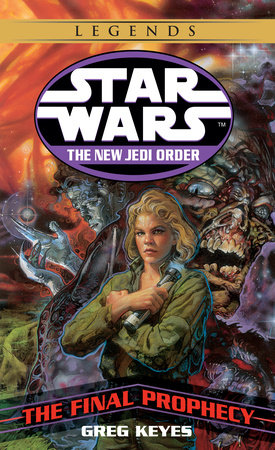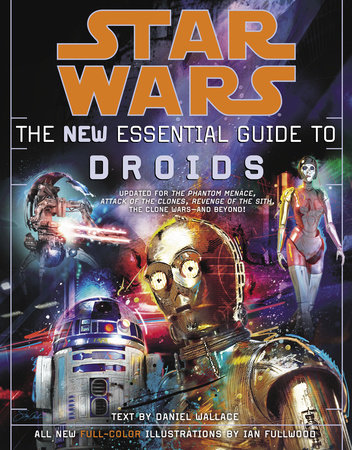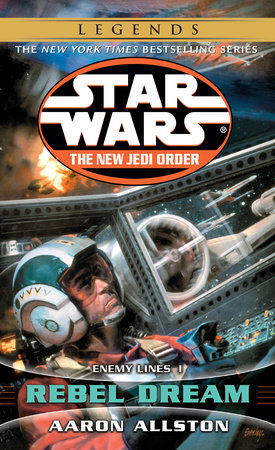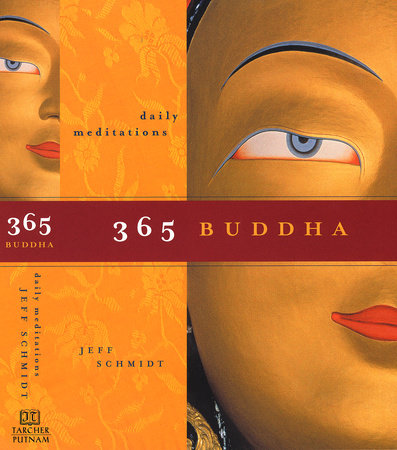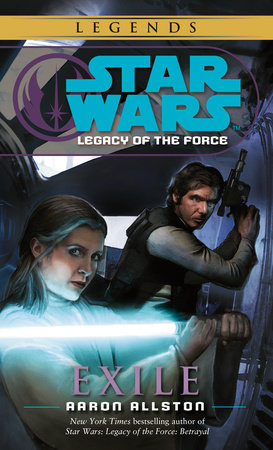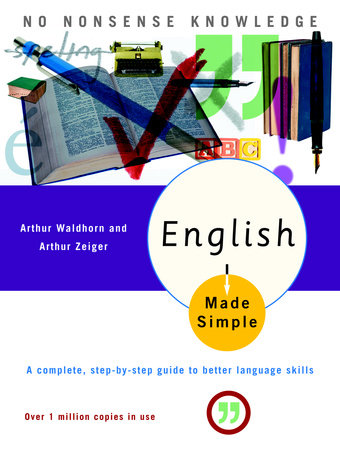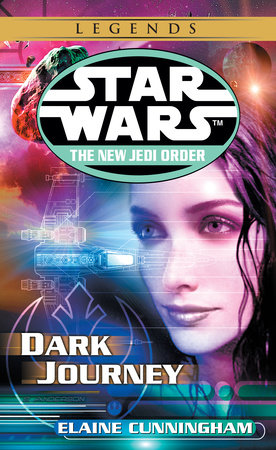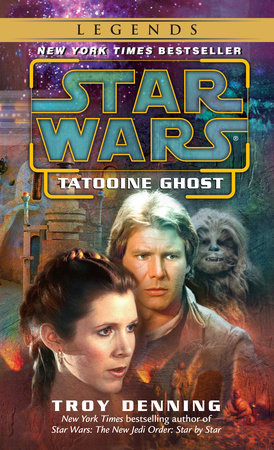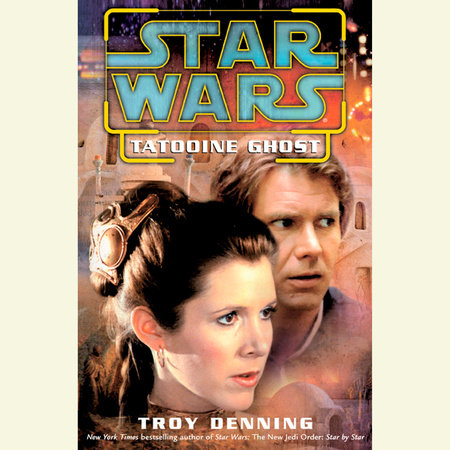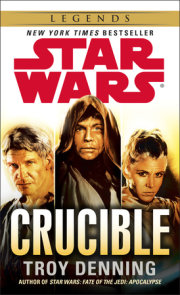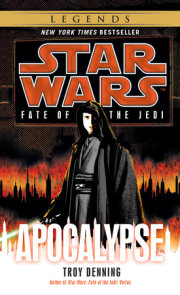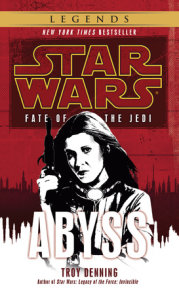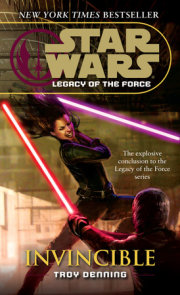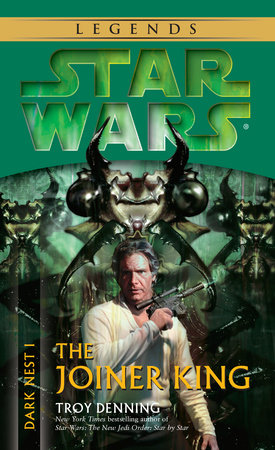Author Q&A
A CONVERSATION WITH TROY DENNING: AUTHOR OF STAR WARS: TATOOINE GHOST
Del Rey:STAR BY STAR was your first book in the STAR WARS: THE NEW JEDI ORDER series. Now comes TATOOINE GHOST, a novel set many years earlier, just after Han and Leia’s marriage. Were you able to apply any lessons learned from STAR BY STAR in writing TATOOINE GHOST? How was this experience different?
Troy Denning:I had a better idea of how the review process worked and knew how supportive it would be. The editors at Del Rey and Lucasfilm are focused on helping the writer tell the best possible story, and their support makes a huge difference. With STAR BY STAR, I was a worried about making continuity gaffs and a little hesitant to take detours that weren’t in the outline; with TATOOINE GHOST, I felt free to do whatever the story needed because at worst someone would say, “That doesn’t work because of X; maybe you should try Y instead.” And I knew that if I did make a continuity error, there would be a dozen pairs of very sharp eyes ready to catch it!
Obviously, I also had to adjust my thinking about Han and Leia. This story occurs in a much happier time for the Solos, before Chewbacca’s death forces them to come to terms with their own mortality. In TATOOINE GHOST, they still have that youthful feeling of invincibility, and the confidence that everything will work out fine in the end. Obviously, it sets a little lighter tone; while the emotional stakes are still very high, the complications are not quite so shattering.
DR:How would you describe TATOOINE GHOST?
TD:The basic idea was pitched to me as a “Classic Bridge” novel, one that ties elements of the Prequel era to the Classic era, and I think that’s a pretty good description of how the book turned out. The story is basically an accident-adventure driven by the complex relationships between characters from two different eras. On the surface, it’s a classic quest—the heroes must recover a physical artifact in order to prevent a terrible harm from befalling their people. But success hinges on resolving the emotional and spiritual conflicts that arise from their relationship to the past; until they are able to reconcile themselves to their personal histories, they cannot save the day for the New Republic.
DR:That’s one of the things I enjoyed most about the book: the way that bits and pieces from the past keep popping up as important elements in the plot and in the growth of Han and Leia toward the people we know they will become. In a way, both the past and the future of these characters are known to readers, but not to the characters themselves. That must have made an interesting challenge! How did you find room for creativity with the demands of continuity pressing in from two sides?
TD:I enjoy tough writing problems because they demand creativity. One of my favorite projects is PAGES OF PAIN, where I was given the assignment of writing a novel from the viewpoint of an enigmatic character who never speaks, with the stipulation that the reader know less about her at the end than at the beginning. It required me to rethink the way I approach a story, and every book I’ve written since has benefited from that experience.
DR:Can you give us an example of how it changed your thinking?
TD:I’m more conscious of the narrator as a character, for one thing. Modern readers prefer to identify as closely as possible with the protagonists; and they really don’t want a third person filtering the experience for them. So, in much—probably most—modern fiction, the author strives to make the narrator invisible, to convince the reader that there isn’t a narrator at all. But somebody has to tell the story, choosing which details to pass along, hinting at whether a frown is angry or sad, deciding whether to pick up the pace with short sentences and punchy writing. Those choices create a personality, and that personality is the narrator. Even if the author tries to hide him, it is the narrator who gives the story its shape and feel. Try to imagine, for instance, how different STAR BY STAR would have been if I had envisioned a Yuuzhan Vong telling the tale instead of someone sympathetic to the Jedi. The book would have included all of the same events, but the story would have been an entirely different one.
But I’m straying pretty far from your question. It was a challenge to write a story in which the characters’ future is so well-known to the readers. I had to use the Solos’ relationship in Heir to the Empire as a sort of guiding beacon for Tatooine Ghost. Kathy Tyers did a wonderful job setting up Leia’s internal conflict over her heritage in The Truce at Bakura, and to a large extent it was my job to resolve that conflict and move the Solos to where they are at the beginning of the Thrawn trilogy. The challenge was to put something at stake in how they got there.
DR:Approaching this from the opposite direction, Episode III won’t be in theaters for a while yet. But the events of TATOOINE GHOST happen after Episode VI, THE RETURN OF THE JEDI, so Han and Leia, as well as other characters, might very well know details from Episode III that are not known to readers. I imagine that you had to be careful not to give anything from Episode III away . . . while at the same being equally careful not to contradict anything. It makes me dizzy just to think about. How did you walk this tightrope in a novel that is so much a dialogue—almost literally in the case of Leia and Shmi’s palm diary—between past and present?
TD:Avoiding spoilers was easy—I don’t know what happens in Episode III. I just focused on Episodes I and II and tried not to contradict anything there. Of course, I also had Del Rey and Lucasfilm looking over my shoulder, and presumably they know a lot more than I do.
DR:Who or what is the ghost of the title? Is it Shmi? Is it Anakin?
TD:As Han says somewhere in the story, it depends on how you look at it. To me, the ghost is something much larger than either Anakin or Shmi.
DR:Do you mean the Force?
TD:Yes and no. I don’t really want to say, because the ghost is going to be something different for everyone. You could even make a case for it being Obi-Wan or the Tuskens, and all of those interpretations might be valid.
DR:I thought it was interesting to see Leia wrestling with the same difficulty that troubles so many fans of the THE PHANTOM MENACE and ATTACK OF THE CLONES: namely, how to reconcile the immensely likeable young Anakin Skywalker with Darth Vader, the living embodiment of the dark side that he becomes.
TD:Yes, that’s the heart of Leia’s struggle. You can’t reconcile the coexistence of good and evil unless you look beyond preconceptions.
DR:Of course, there’s always the danger that she’s inherited this propensity from her father.
TD:There is that danger, yes. In fact, as the novel begins, Leia has already started to follow in her father’s footsteps precisely because she has fallen into the trap of narrow thinking, of believing that a person is either one thing or the other.
DR:In Leia’s Force-visions, you give readers an unusual glimpse into the mysterious nature of the Force. We know that the dark side of the Force can be a terrifying thing, but here you show us that it’s not just the dark side. Leia is resisting what the Force is trying to show her . . . and the Force doesn’t like to be resisted!
TD:This touches on a theme close to my heart, the idea that life is a current. You can either fight the current or go with it. If you fight it, life will be a battle, but you stand a good chance of ending up some place close to your goal (although you may be too tired and battered to enjoy it). If you go with the current, life will be easier, but you have no idea where you’ll end up—it could be bad, it could be good. The compromise is to work with the current, to guide yourself within it to someplace you’ll be happy. Leia, of course, has been a current-fighter all her life; the realization she reaches in TATOOINE GHOST is that her particular current is a very strong one.
DR:At one point, the Force seems to be warning Leia that her brother, Luke, may go over to the dark side. I know that this did in fact happen in the Dark Horse Dark Empire comic series, but I was wondering if this was a bit of foreshadowing for a future exploration of those events in book form?
TD:The vision you’re talking about is a direct reference to the comic story, but I doubt it will be explored any further in novel form. (In fact, I think Lucasfilm editors have said they have no plans to turn comic stories into novels.) I utilized that scene solely because it already existed in the STAR WARS continuity, so it would have been redundant to make up something similar.
DR:You’re probably best known as a fantasy writer from your work in the FORGOTTEN REALMS series. How different is it to write science fiction? Or do you consider STAR WARS fantasy as some writers and readers do?
TD:I go back and forth on this. I’m sure I’ve taken opposite positions in different interviews. At the moment, I guess I think of STAR WARS as space opera rather than fantasy—if for no other reason than it doesn’t feel like fantasy when I write it. There are certainly fantasy parallels: an epic plot, larger-than-life heroes, a concern for the spiritual element of the quest. But, at its heart, I think STAR WARS is very concerned with the relationship between technology and spirit, which fantasy is not. Besides, I just can’t bring myself to think of the Force as magic. Magic is beyond nature, while the Force is intimately connected to life and therefore very much a part of nature—even if it is beyond our understanding.
DR:How did you get your start as a writer? What advice do you have for aspiring writers?
TD:I started writing stories in 8th grade, when our English teacher assigned us the task of keeping a journal. At first, I don’t think he realized the entries were fiction). I’ve been at it since. Eventually—fifteen years later—I was able to put together a decent-enough story that TSR asked me to write one of the FORGOTTEN REALMS Avatar books.
The best advice I can give to any aspiring writer is to stop aspiring and start doing! You have to write every day. You have to ignore the little editor in your head that tells you to rewrite each paragraph before you move on to the next one. You have to study your craft by reading the fiction of other writers, but also books and magazines on how to plot, to create believable characters, to establish viewpoint, etc. Fiction really is an art, and it takes a lot of study to do it well.
DR:Which writers’ work was the most helpful for you as far as learning your craft?
TD:If I had to pick just one—and thankfully I don’t—it would be William Goldman. The things he did with THE PRINCESS BRIDE are just brilliant; I find myself going back to study the sword fight scenes every few months. He makes it looks so easy and spontaneous—which, of course, is a tribute to how long and hard he must have worked on that book. I think most writers would agree that the most difficult thing to do is make your prose look effortless.
But when I talk about studying the craft, I really do mean studying. My favorite books above all are books about writing: Rober McKee’s STORY, Wayne C. Booth’s THE RHETORIC OF FICTION, Joseph Campbell’s books THE HERO WITH A THOUSAND FACES. It’s not enough just to read fiction; you have to step back and look at it from the outside.
DR:You’ve also written an eBook novella, A FOREST APART, that takes place immediately prior to TATOOINE GHOST and features Chewie, his life-mate, Mallatobuck, and their son, Lumpy. It’s good to see Chewie again, and especially taking the starring role!
TD:One of the highlights of TATOOINE GHOST was that Chewbacca would be back, and I really wanted to do him justice. In my early drafts, I overdid his part a bit—he was appearing in scenes where he didn’t belong, and in other places I was straining to give him a larger part than his role warranted. I fixed this before the editors saw the manuscript, but I loved writing him so much that I wanted to do more. So, when we talked about an eBook, I realized this was the perfect opportunity to explore his character. I have to say it’s not easy to write an all-Wookiee story, but it was a lot of fun.
DR:What are you working on now? Will you be returning to that galaxy “far, far away” anytime soon?
TD:My next project is a Han and Leia story, tentatively titled NEVER TRUST A SQUIB, for the INSIDER. It should come out a month or so after TATOOINE GHOST. Then I’ll probably start work on an epic fantasy series that I’ve been putting together for a couple of years. Beyond the INSIDER story, I don’t have any current plans to return to the GFFA, but I’m definitely open to the possibility. I’m a STAR WARS fan from way back, and I love where the stories are going now.
